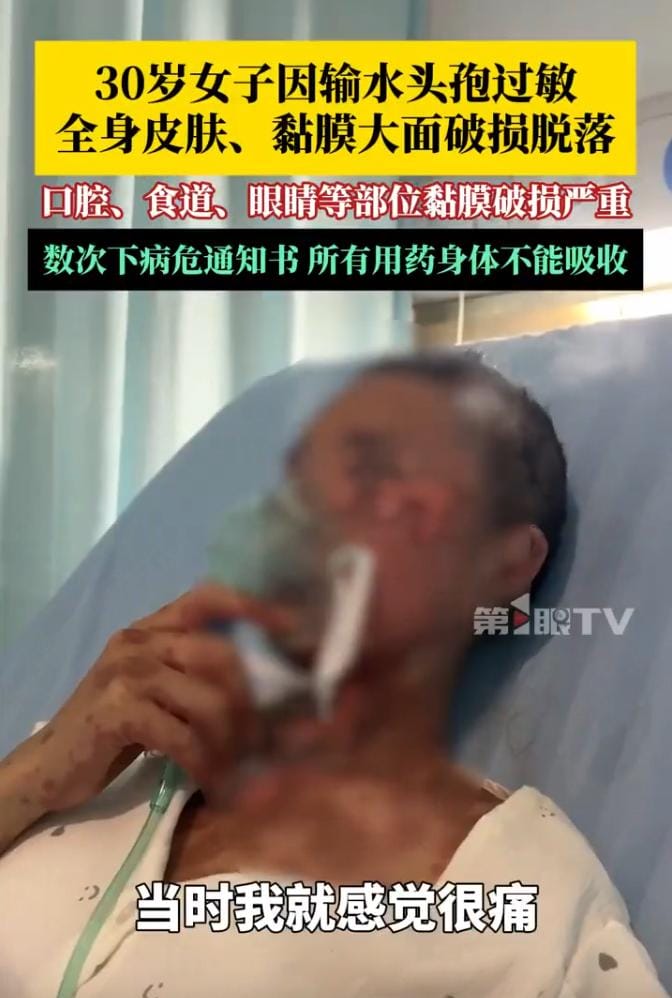Severe Allergic Reaction to Cephalosporin: A Yunnan Woman's Story
A Yunnan woman suffered life-threatening skin and mucous damage after a cephalosporin allergy. Learn about her ordeal and the serious risks of drug allergies.

The Terrifying Reality of Drug Allergies
Imagine going to the hospital for what seems like a common cold 🥶 and leaving with a life-threatening condition. This was the tragic experience of Ms. Zhao from Yunnan, who suffered a severe allergic reaction to cephalosporin, a widely used antibiotic.
Why does this matter? Because it raises important questions about drug safety, allergy testing, and patient awareness. Could this have been prevented? What should patients and healthcare providers do differently?

A Nightmare Unfolds: From Cold to Critical Illness
Ms. Zhao initially sought treatment for a simple cold. The hospital staff administered cephalosporin via IV drip — a common antibiotic known to many. However, no allergy skin test was performed beforehand.
Almost immediately, Ms. Zhao felt sharp pain during the IV drip. The nurse dismissed these discomforts as normal. But that night, her skin began to redden and swell, accompanied by blisters erupting inside her mouth. By the following day, her fever soared to a staggering 40°C.
This was no ordinary reaction — it was toxic epidermal necrolysis (TEN), a rare but devastating condition where the skin and mucous membranes essentially peel off in sheets. The damage extended from her skin to vital membranes in her mouth, eyes, and esophagus.
The Grim Diagnosis and Harrowing Aftermath
Ms. Zhao was transferred between multiple hospitals, with several critical illness notices issued. Finally, a diagnosis confirmed the severity: severe drug eruption and TEN. Her body could no longer absorb medications effectively, complicating treatment.
Tragically, she had no prior known allergies to penicillin or cephalosporin. Without prior testing, this catastrophic reaction was unforeseen.
Today, Ms. Zhao faces a long, uncertain road to recovery. Her damaged corneas and tear glands require continuous medication, her fingernails have fallen off, and she needs surgery for ear adhesions caused by the reaction. She poignantly shares, "My life is saved, but my skin can only recover slowly on its own. I don't know what the final outcome will be."
What Can We Learn?
Ms. Zhao’s experience highlights a critical gap in drug safety protocols. Given that cephalosporins are commonly prescribed, the absence of rigorous allergy screening risks repeating tragedies like hers.
Healthcare providers must prioritize thorough testing when prescribing antibiotics, especially for IV use. Patients should also be informed of potential side effects and encouraged to report discomfort immediately — even if staff downplays their concerns.
Lastly, this case underlines the importance of medical vigilance and patient advocacy. Speaking up and seeking second opinions can save lives when initial symptoms seem atypical or severe.
Conclusion: A Call for Awareness and Caution
Severe allergic reactions such as Ms. Zhao’s are rare but devastating. This story is a sober reminder that no medication is without risks. As patients and caregivers, staying informed, vigilant, and insisting on allergy testing could mean the difference between recovery and catastrophe.
Let Ms. Zhao’s ordeal be a wake-up call — medicine can heal, but it can also harm when caution is sidelined. 💊⚠️




